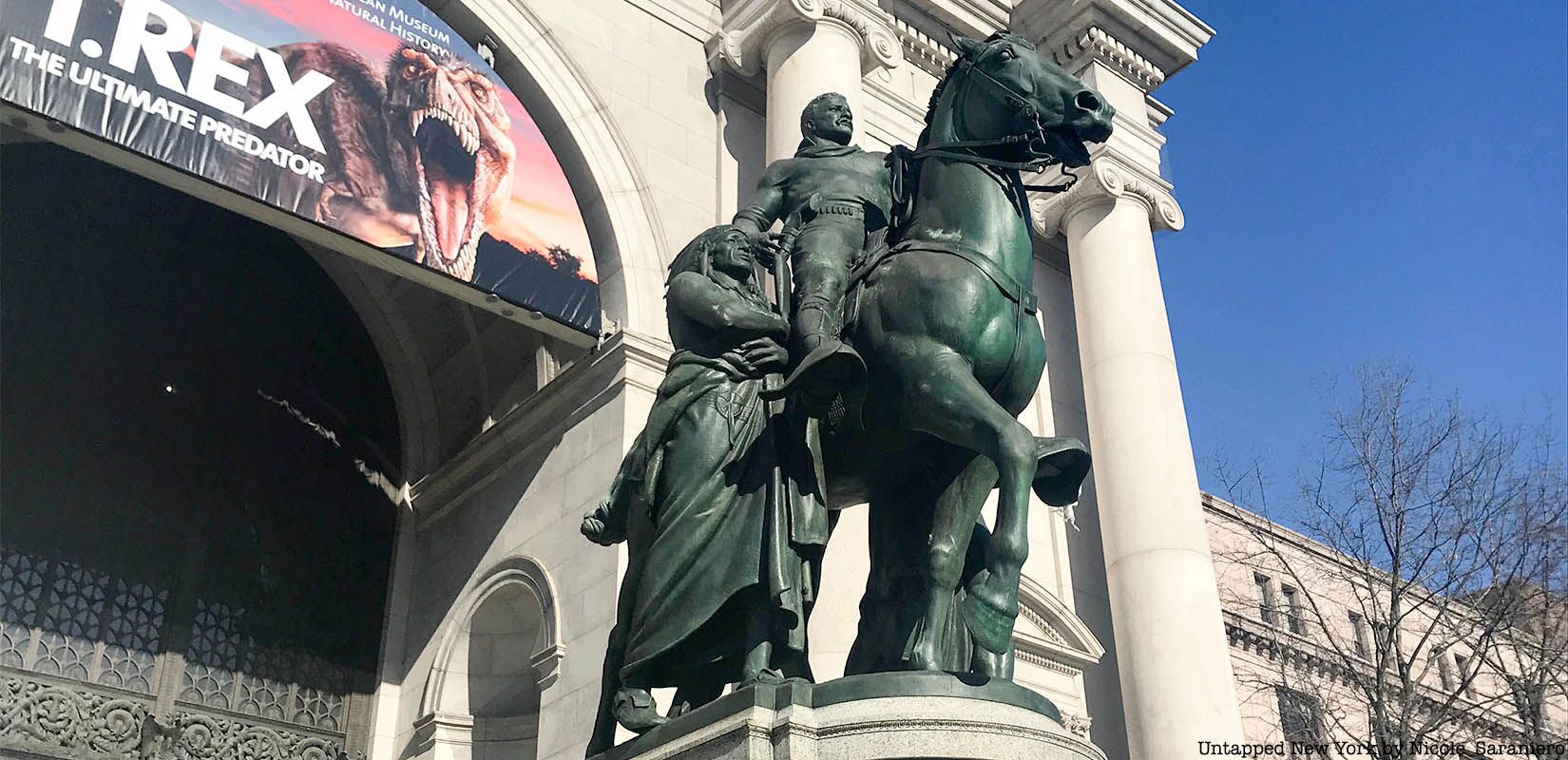Last Chance to Catch NYC's Holiday Notalgia Train
We met the voices of the NYC subway on our nostalgia ride this weekend!


After years of debate, the equestrian statue of Theodore Roosevelt, found outside of the American Museum of Natural History, will be removed according to the museum. The statue has been quite controversial over the last two decades, as it depicts President Theodore Roosevelt on horseback with an indigenous American and an African man on his sides. The museum and New York City, which owns the land it sits on, agreed to remove the statue, which for some has come to represent a symbol of white supremacy and colonial expansionism.

A descendent of Theodore Roosevelt, Theodore Roosevelt IV, released a statement to the New York Times in agreement with the statue’s removal, saying “The world does not need statues, relics of another age, that reflect neither the values of the person they intend to honor nor the values of equality and justice,” he said. “The composition of the Equestrian Statue does not reflect Theodore Roosevelt’s legacy. It is time to move the statue and move forward.” Ellen V. Futter, the Museum’s president said in an online statement, “the statue itself communicates a racial hierarchy that the Museum and members of the public have long found disturbing” and adds “among more context, “to understand the statue, we must recognize our country’s enduring legacy of racial discrimination — as well as Roosevelt’s troubling views on race. We must also acknowledge our Museum’s own imperfect history. Such an effort does not excuse the past but it can create a foundation for honest, respectful, open dialogue.”

Mayor Bill de Blasio said in a statement. “The American Museum of Natural History has asked to remove the Theodore Roosevelt statue because it explicitly depicts Black and Indigenous people as subjugated and racially inferior. The City supports the Museum’s request. It is the right decision and the right time to remove this problematic statue.”
The sculpture was designed by James Earle Fraser, known for works like the Benjamin Franklin Memorial in Philadelphia and the William Howard Taft Monument at Arlington National Cemetery. The sculpture was commissioned by the Roosevelt Memorial Association in 1925, and it likely depicts Roosevelt riding Pegasus accompanied by two guides representing Africa and America. The statue is currently placed by the entrance to the hall of dioramas dedicated to Carl Akeley, who accompanied Roosevelt on a year-long expedition in Africa funded by the Smithsonian Institution. The Museum also has a hall dedicated to Roosevelt with three monumental murals by William Andrew McKay that were restored in 2012.

The equestrian sculpture came under scrutiny in the 1990s, as figures like sociologist James Loewen argued that the arrangement of the two men advocates white supremacy. The sculpture’s significance became a topic of discussion after the Unite the Right rally of 2017, as people began to draw attention to the sculpture’s possible representation of America’s white social hierarchy. The sculpture was vandalized with red paint in 2017, yet the New York City government ruled that the statue would not be taken down in 2018. The New York City Commission on Controversial Monuments “determined that the Rooselt statue would remain in place that more information be provided,” according to the Museum. The Museum put up an exhibit last year called “Addressing the Statue” to explore the sculpture’s design and installation.
Despite Roosevelt’s conservation efforts and nationalism, critics note that Roosevelt supported imperialism especially during the Spanish-American War, resulting in American expansion into countries like Puerto Rico, Cuba, and the Philippines. Critics also cite examples of his support for eugenics and a racial hierarchy in the United States.
However, the museum, with a number of sites named for Roosevelt today, stressed that the sculpture’s removal is based primarily on the statue’s hierarchical composition. Futter told the New York Times that the request for removal “is not about Theodore Roosevelt who served as Governor of New York before becoming the 26th president of the United States and was a pioneering conservationist.”
It is currently unclear when the statue will be taken down and what will happen to it after. The museum will be naming its Hall of Biodiversity for Roosevelt to honor his efforts in conservation, as he established 150 national forests and five national parks as President. As debate surrounding controversial public statues continues in the midst of racial protests, the Theodore Roosevelt statue is among many whose past and futures are being reckoned with.
Next, check out Babylon’s Statue of Robert Moses, also the subject of fierce debate and calls for removal, and the call to remove the names of Robert E. Lee and Stonewall Jackson from Fort Hamilton in Brooklyn.
Subscribe to our newsletter